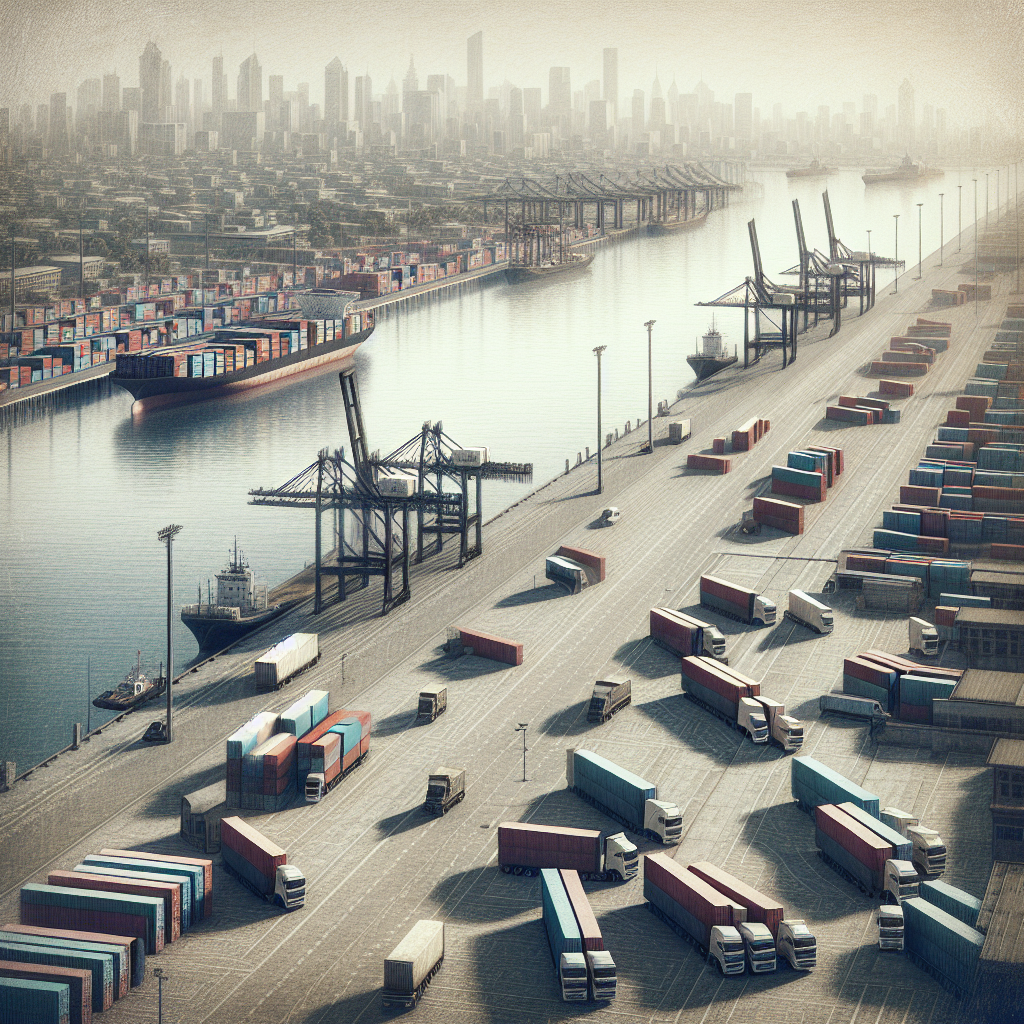Huge Decline at LA Port is a Hit to Truckers—and a Stark Warning of Coming Tariff Damage
The recent decline in cargo volumes at the Port of Los Angeles has sent shockwaves through the trucking industry, highlighting the potential for significant repercussions as the nation grapples with ongoing tariff disputes. The port, which serves as a key entry point for goods into the United States, has seen a drastic reduction in shipments, raising concerns among truckers and logistics experts alike.
The Current Situation at the Port of Los Angeles
The Port of Los Angeles, one of the busiest ports in the world, has reported a remarkable decrease in container traffic. This downturn is not merely a seasonal fluctuation; it reflects a broader trend that has emerged in recent months. Several factors are contributing to this decline, including:
1. Supply Chain Disruptions: The lingering effects of the pandemic have caused significant disruptions in supply chains, affecting everything from manufacturing to delivery.
2. Labor Shortages: The trucking industry is currently facing a significant shortage of drivers, limiting the capacity to transport goods efficiently.
3. Ongoing Tariff Issues: The escalating trade tensions between the U.S. and various countries have led to uncertainty in the market, causing businesses to reevaluate their import strategies.
The implications of this decline extend far beyond the port itself. Truckers, who rely heavily on consistent cargo volumes for their livelihoods, are feeling the pinch. Many are reporting decreased earnings, and some are even leaving the industry altogether as a result of these challenges.
Impact on Truckers
Truckers are the backbone of the transportation industry, and the decline in cargo volumes at the Port of Los Angeles has a direct impact on their operations. Some of the key issues facing truckers include:
1. Decreased Freight Demand: The drop in cargo means fewer loads for truckers to haul, leading to a reduction in income.
2. Increased Competition: With fewer shipments available, competition among truckers has intensified, driving down rates and further squeezing profits.
3. Operational Costs: Despite the decreased demand, truckers still face high operational costs, including fuel, maintenance, and insurance, which can eat into their already reduced margins.
Amidst these challenges, truckers are left to navigate a difficult landscape where financial stability seems increasingly out of reach.
A Stark Warning of Coming Tariff Damage
The decline at the Port of Los Angeles serves as a stark warning of the potential damage that ongoing tariff disputes could inflict on the broader economy. Tariffs, which are taxes imposed on imported goods, can lead to increased prices for consumers and reduced demand for imported products. The repercussions of these tariffs can be felt throughout the supply chain, impacting manufacturers, distributors, and ultimately, consumers.
1. Increased Costs: Tariffs lead to higher costs for businesses importing goods, which can result in increased prices for consumers. If companies pass on these costs, consumer spending may decline, further driving down demand.
2. Market Uncertainty: Ongoing tariff disputes create an unpredictable market for businesses, making it difficult for them to plan for the future. This uncertainty can lead to reduced investments and slower economic growth.
3. Global Supply Chains: Tariffs can disrupt established global supply chains, forcing companies to seek alternative sources for materials or products. This can lead to inefficiencies and increased production times, ultimately impacting consumer availability.
As these issues continue to unfold, the potential ripple effects on the economy could be significant.
Looking Ahead: Potential Solutions
While the challenges facing the Port of Los Angeles and the trucking industry are formidable, there are potential solutions that could help alleviate some of the pressure. Stakeholders across the supply chain must work together to address the underlying issues. Some potential solutions include:
1. Investment in Infrastructure: Improving port infrastructure and logistics can help streamline operations and increase efficiency, allowing for quicker turnaround times.
2. Driver Recruitment Initiatives: Addressing the driver shortage is critical. Initiatives aimed at recruiting and retaining drivers, such as improved pay and working conditions, could help stabilize the industry.
3. Collaboration with Government: Engaging with policymakers to advocate for fair trade practices and to address tariff issues can help create a more predictable environment for businesses.
As the situation evolves, truckers and logistics professionals must remain adaptable and prepared for change.
Conclusion
The decline at the Port of Los Angeles is more than just a statistic; it is a harbinger of challenges and uncertainties that lie ahead for the trucking industry and the broader economy. As tariff disputes intensify and supply chain disruptions persist, the future remains uncertain. It is imperative for all stakeholders to collaborate and seek solutions that can mitigate the impact of these challenges.
The trucking industry, vital to the movement of goods across the nation, is at a crossroads. The decisions made today will shape the landscape of logistics for years to come. By addressing the immediate concerns and planning for a more resilient future, the industry can navigate these turbulent waters and emerge stronger on the other side.



